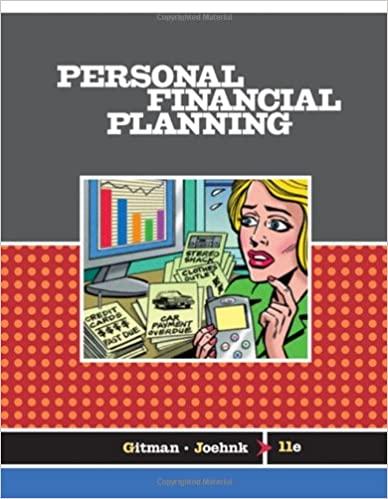Answered step by step
Verified Expert Solution
Question
1 Approved Answer
with NOI given for year 1 = 1 , 1 2 7 5 0 0 year 2 = 1 , 1 7 7 , 4
with NOI given for year year year year year year
BACKGROUND
An institutional investor is interested in purchasing a multitenant office building in
Portland, OR which has an asking price of $ per SF Assume that, apart from the
purchasing cost, there are no additional acquisitionrelated costs. The building size is
SF It is currently leased to three tenants:
The first tenant occupies SF and currently pays $SFyear The lease will
expire at the end of year There will be no rental increase for the first two years. Based
on conversations with the tenant, you can assume that the lease renewal probability is
The second tenant occupies SF and currently pays $SFyear The lease will
expire at the end of year and has annual rent increases of Based on conversations
with the tenant, you can assume that the lease renewal probability is
FIN Project
Real Estate Investment
The third tenant occupies the remaining space, and their current rent is $SFyear
The lease will expire at the end of year Rental increases of $ per SF will occur at
the beginning of year year and year There are no increases for years and
Note: Assume the current contract rents as the basis for your year potential gross income.
V&C for the first two years is assumed to be From year three assume a V&C of
of the PGI each year, which will increase to from year The average market rent for
office is currently $SFyear and it is forecasted to decrease by each year for two
years and then increase again at each year for the subsequent years. Renewing tenants
receive a $SF discount to the market rental rate.
The landlord covers $SF of operating expenses, which increase by each year expense
inflation The roof has to be replaced in year The total estimated cost is $ with
a reserve of $ created in years and For simplicity, no other capital expenses
are assumed, and no tenant improvements and leasing commissions are incurred for new
or renewing tenants.
Assume that the building is bought in January and sold in December ie the
investor expects to hold the building for years. The building is depreciated over years
midmonth convention for first and last year and the value of improvements building is
considered to be of the purchasing price. The new roof is depreciated over years
midmonth convention
The goingout cap rate is and the investor requires a return of Selling costs are
of the sales price.
Assume an income tax of and a capital gains tax of Make sure you tax the
depreciation recapture and capital gain with the appropriate tax rates.
Assume the investment is financed using Mortgage Option A the fixed rate mortgage in
Part
FIN Project
Real Estate Investment
ASSIGNMENTS
Part :
Assuming that the investor wants to hold the property for years, create the proformas for
cash flows from operations and equity reversion until the NOI and net selling price level
respectively.
Conduct a discounted cash flow analysis DCF to calculate the IRR and NPV based on
NOI and net selling price for this investment. Is this investment worth undertaking?
Whywhy not?
For this and other partssections you can add your answers to my questions to the
respective spreadsheet and do not need to prepare a separate file.
Part :
Mortgage Option A Fixed rate mortgage: The investor received a lenders offer for a
year mortgage at compounded monthly with a loantovalue ratio LTV of
No financing costs eg origination fees or discount points occur.
Calculate the aftertax NPV and IRR for this option. Is this investment on its own
worth undertaking? Whywhy not?
Calculate the annual cashoncash yield. What is the average cashoncash return for
the holding period? Would you consider it attractive to investors? Whywhy not?
Calculate the annual debt service coverage ratio DSCR Assuming the lender
requires a minimum DSCR of does it meet this requirement?
Mortgage Option B Floating rate mortgage: The investor also has received offers for
floating rate mortgages from two lenders. All have annual interest rate adjustments. All
mortgages assume an LTV of and a year maturity.
For simplicity, use annual mortgage payments in the payment schedules.
FIN Project
Real Estate Investment
Floating Rate Mortgage Floating Rate Mortgage Initial interest teaser rate mortgage; initial interest is fixed for years and only interest is paid.
Amortization begins in year
The initial interest rate is
Margin
Caps Periodic payment cap of Periodic interest ceiling:
Periodic interest floor:
Prepayment penalty None
Discount Points None
Interest rates are expected
Step by Step Solution
There are 3 Steps involved in it
Step: 1

Get Instant Access to Expert-Tailored Solutions
See step-by-step solutions with expert insights and AI powered tools for academic success
Step: 2

Step: 3

Ace Your Homework with AI
Get the answers you need in no time with our AI-driven, step-by-step assistance
Get Started


